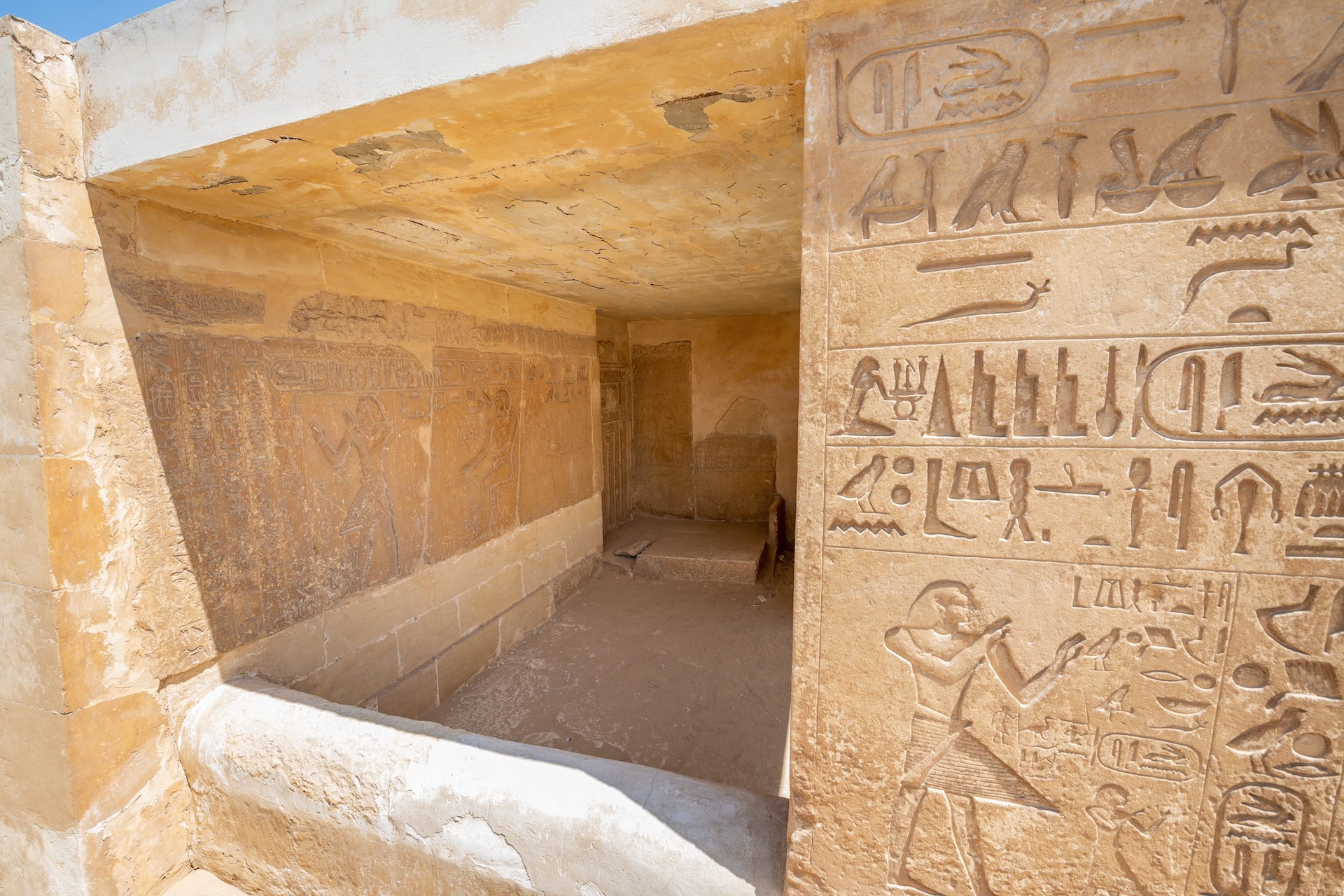
Why are so many ancient Egyptians buried at the Saqqara necropolis?
The ancient Egyptians buried their dead at Saqqara for thousands of years. Why was the necropolis so important to them?

Saqqara is an archaeologist's dream, being home to a vast number of ancient Egypt's mummies, tombs and around a dozen pyramids. Every year, researchers unearth new discoveries at the site, including mummy masks, Book of the Dead scrolls and even mummification workshops.
But why did so many ancient Egyptians want to be buried there?
Saqqara has been used for thousands of years and "the reasons for being buried at the site differed through time," Nico Staring, an Egyptologist and researcher at the University of Liège in Belgium, told Live Science in an email.
One important reason is its proximity to the city of Memphis. "Saqqara was the main necropolis associated with the capital city of Memphis, which remained, to a large extent, an administrative centre throughout Egypt's history as well as being a major religious centre celebrating the cults of a variety of deities" Salima Ikram, a professor of Egyptology at the American University in Cairo, told Live Science in an email.
It's hard to overstate the importance of Memphis to Saqqara, Staring said.
"Saqqara should be viewed as a component of the wider, lived urban environment" he said. "The living inhabitants of Memphis shaped and reshaped the necropolis over many generations, and so the life histories of both the city and its necropolis were closely intertwined."
Related: Did the ancient Egyptians really marry their siblings and children?
Sign up for the Live Science daily newsletter now
Get the world’s most fascinating discoveries delivered straight to your inbox.

Saqqara was also revered because some early Egyptian pharaohs built their tombs there. During the second dynasty (circa roughly 2800 to 2650 B.C.) the pharaohs Hotepsekhemwy, Reneb and Ninetjer all constructed tombs at the site, Lara Weiss, CEO of the Roemer and Pelizaeus Museum in Germany, told Live Science in an email. The third dynasty pharaoh Djoser famously constructed a step pyramid at Saqqara, and several other pharaohs, such as the fifth dynasty pharaohs Userkaf, Unas and Djedkare Isesi, also built pyramids at the site.
As the pharaohs were buried, "large numbers of their court officials constructed their so-called mastaba tombs in their vicinity," Staring added, explaining that the grounds weren't just for royalty.
Even in the New Kingdom (circa 1550 to 1070 B.C.), a time when pharaohs were buried in the Valley of the Kings about 300 miles (483 kilometers) away, many officials still wanted to be buried at Saqqara. This happened because of the site's history and association with Egyptian deities, Staring said. While "the kings were buried in the Valley of the Kings in Thebes, the kingdom's most important administrators built their temple-shaped tombs at Saqqara, at a site that was imbued with history and a site that was considered to be the abode of various prominent deities such as Sokar, a god of death," Staring said.
The Step Pyramid of Djoser was particularly well regarded long after it was built. "Interestingly, old monuments from the past continued to exert influence on later generations," Staring said. Even when it was 1,000 years old, the Step Pyramid complex "received literate visitors that perpetuated their admiration for the monument in graffiti written on the walls of the complex." Staring said.
Living legacy
Although it is an ancient place, Saqqara is still an active burial site today. "Saqqara continues to be used as a burial ground, albeit to a much lesser extent, into the present," Ikram said.
The importance of Saqqara "diminished dramatically" as Christianity became the main religion in Egypt during the fourth and fifth centuries, Ikram noted. But even with the decline of Egypt's polytheistic religion, Saqqara still saw some use — for example, the Coptic Monastery of Jeremiah was built at the site in the fifth century, Weiss noted.
Today, the site is abuzz with archaeologists and tourists. "As a place of the living rather than the dead, the site is today more alive than ever," Staring said.
Editor's note: This article was updated at 3:37 p.m. EDT on June 3 to note that Nico Staring is at the University of Liège in Belgium.

Owen Jarus is a regular contributor to Live Science who writes about archaeology and humans' past. He has also written for The Independent (UK), The Canadian Press (CP) and The Associated Press (AP), among others. Owen has a bachelor of arts degree from the University of Toronto and a journalism degree from Ryerson University.










